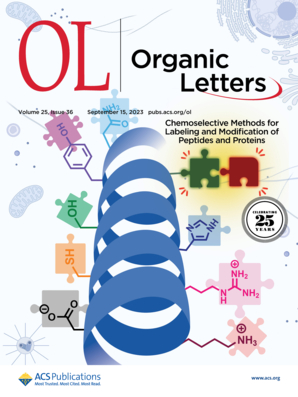A Mechanistic Perspective on Photocatalytic EnT-Enabled C3-N-Heteroarylation of Aryl Quinoxaline via C(sp2)–C(sp2) Coupling
IF 4.9
1区 化学
Q1 CHEMISTRY, ORGANIC
引用次数: 0
Abstract
An EnT-mediated C3-N-heteroarylation of 2-aryl quinoxalines via decarboxylative radical–radical cross-coupling (C(sp2)–C(sp2)) with oxime esters is presented. Upon photoactivation, the triplet energy of the photocatalyst is transferred to both reacting partners (oxime ester and 2-phenylquinoxaline). The excited oxime ester undergoes decarboxylative fragmentation to a C-centered N-heteroaryl radical and an N-centered imine radical. The former attacks the C3 site of the quinoxaline diradical, while the latter acts as a hydrogen atom abstractor (HAA). Computational studies revealed that C–C bond formation with the heteroaryl radical is energetically more favorable than C–N bond formation.

求助全文
约1分钟内获得全文
求助全文
来源期刊

Organic Letters
化学-有机化学
CiteScore
9.30
自引率
11.50%
发文量
1607
审稿时长
1.5 months
期刊介绍:
Organic Letters invites original reports of fundamental research in all branches of the theory and practice of organic, physical organic, organometallic,medicinal, and bioorganic chemistry. Organic Letters provides rapid disclosure of the key elements of significant studies that are of interest to a large portion of the organic community. In selecting manuscripts for publication, the Editors place emphasis on the originality, quality and wide interest of the work. Authors should provide enough background information to place the new disclosure in context and to justify the rapid publication format. Back-to-back Letters will be considered. Full details should be reserved for an Article, which should appear in due course.
 求助内容:
求助内容: 应助结果提醒方式:
应助结果提醒方式:


